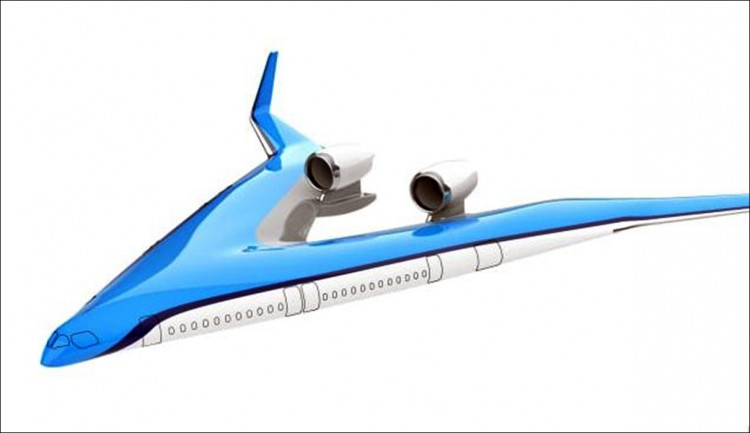A scale model of the revolutionary and futuristic "Flying-V" passenger jet has successfully conducted its first series of test flights in Germany.
As its name accurately implies, the Flying-V resembles a letter "V" but with two jet engines mounted at the end of its arms. What makes the jet revolutionary isn't only its shape. The only other aircraft with a similar configuration is the Northrop-Grumman B-2 Spirit stealth strategic bomber of the U.S. Air Force.
What's remarkable about this blended wing aircraft is the passenger cabin, fuel tanks and baggage hold are built into the wings because there is no central fuselage.
Research by Delft Technical University (TU Delft) in the Netherlands, which developed the concept, shows this odd design improves fuel efficiency by up to 20 percent compared with an Airbus A350 jetliner, today's most fuel-efficient passenger plane. The Flying-V was designed as a fuel-efficient, long-range passenger aircraft.
It's also 15 percent more aerodynamically efficient than conventional aircraft. A full-size Flying-V will seat 314 passengers in two classes. The Flying-V project is being financed by KLM Royal Dutch Airlines.
The flight tests in Germany began in July and involved a three-meter-long scale model with two 4kW electric "ducted fan" engines powered by a lithium polymer battery.
TU Delft researchers worked with an Airbus team to test takeoffs, maneuvers, approaches and landings. One of main worries of the Dutch team was the aircraft might have some difficulty taking off, since previous calculations had revealed unwanted aircraft rotation might be an issue.
"The team optimized the scaled flight model to prevent the issue," said Roelof Vos, an assistant professor of flight performance and propulsion at TU Delft. "But you need to fly to know for sure."
Vos said the aircraft's thrust was strong. Flight speeds and angles played out just as the team had predicted.
On the other hand, Vos said the scale model had "somewhat of a rough landing" because of the aircraft's shape and difficulty in keeping the wings level. He said this behavior was predicted in the initial data. The team will use the flight data to build an aerodynamic version of the scale model.
Pieter Elbers, KLM president and CEO, said the Flying-V design "fits within our Fly Responsibly initiative, which stands for everything we are doing and will do to improve our sustainability. We want a sustainable future for aviation and innovation is part of that."
The full-size Flying-V will have a 55-meter wingspan; stand 17 meters tall and have a length of 55 meters.






